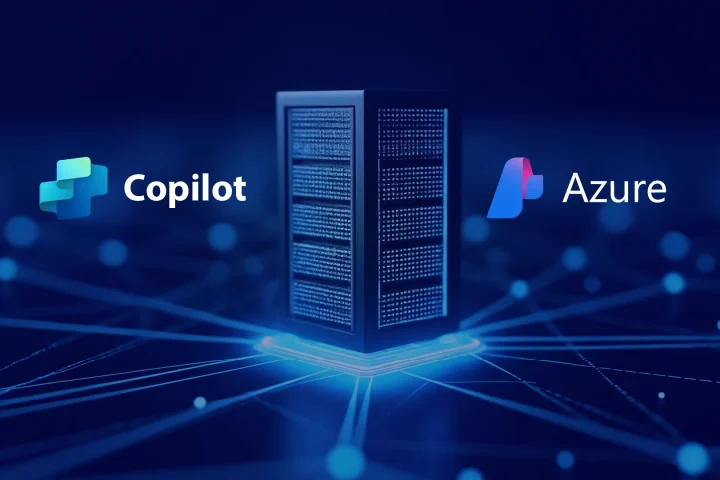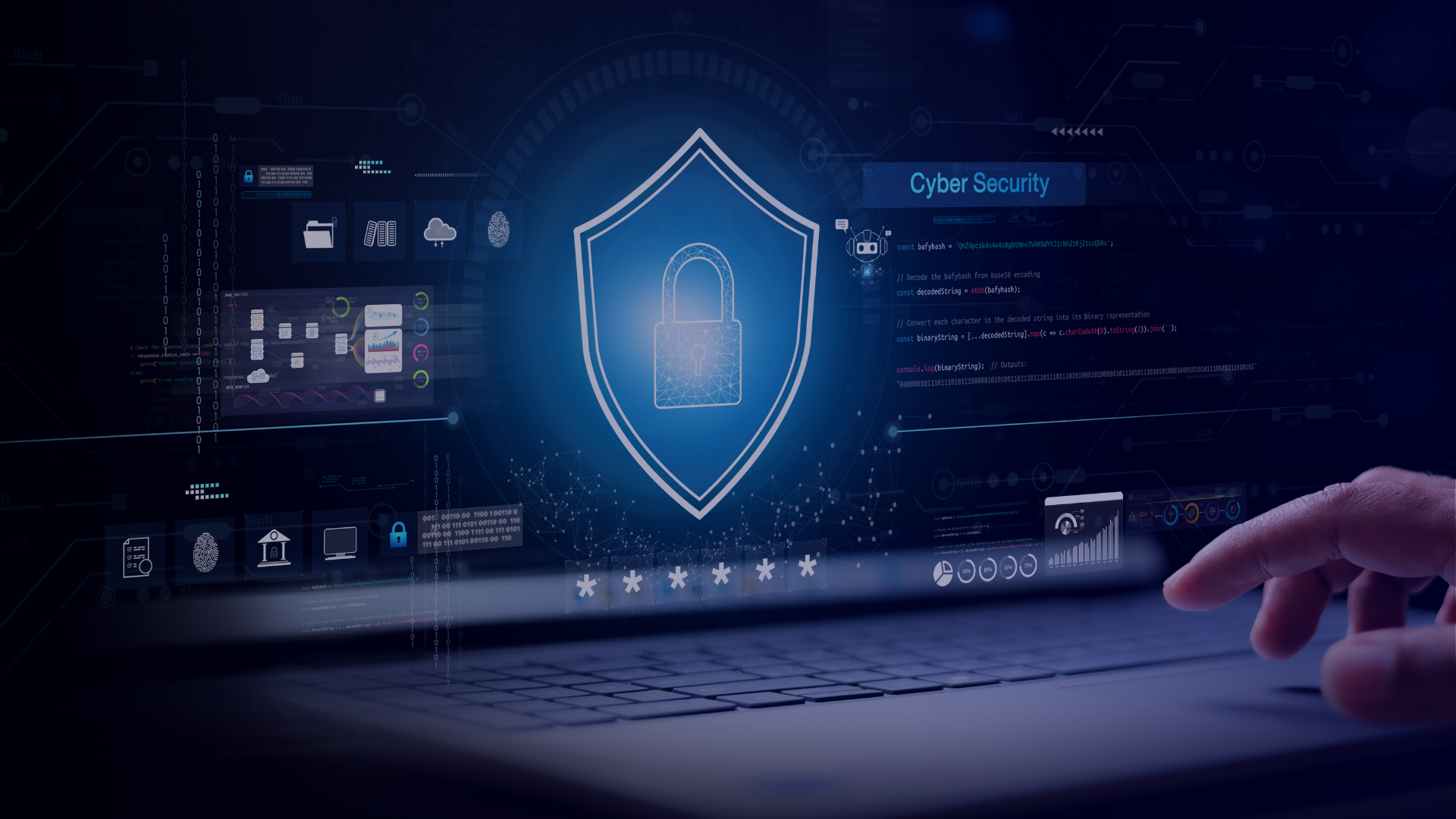
Ransomware is no longer a distant headline in the enterprise software industry; it’s happening everywhere, every day. The FBI reported record-breaking ransomware attacks in Q4 2024, and IBM i systems are increasingly in the crosshairs.
For organizations relying on IBM i, ransomware protection is no longer optional. Yet many businesses remain unprepared: nearly half of IBM i shops lack the security expertise needed to safeguard their systems, and over 70% admit they don’t have a recovery plan in place. This leaves mission-critical operations dangerously exposed to modern ransomware threats.
The stakes couldn’t be higher.
Attackers don’t discriminate — they target your weakest systems. An unprotected IBM i environment can become the gateway that compromises your entire network, whether data resides on IBM i or connected servers. For organizations running payroll, ERP, and financial systems on IBM i, a successful attack can shut down operations and result in costly downtime, data loss, compliance violations, and the devastating exposure of sensitive data to cybercriminals.
This blog addresses the urgent need for IBM i ransomware protection. You’ll learn why your systems are increasingly targeted and discover five practical steps you can implement immediately to strengthen your defenses. You’ll walk away with a clear action plan, proven recommendations, and access to deeper expert insights from our webinar, IBM i Security Trends for 2025.
The Growing Need for IBM i Ransomware Protection in 2025
Ransomware has evolved into a sophisticated business model. Attackers encrypt your files, steal your data, and demand cryptocurrency payments — often threatening to publish sensitive information even if you pay.
The numbers tell the story:
- Less than 50% of businesses have a formal ransomware response plan (2025 Thales Data Threat Report).
- 34% of organizations take more than a month to recover from an attack, while only 35% recover within a week (a sharp decline from 47% in previous years).
- Nearly 10% of victims end up paying the ransom, despite warnings against doing so (Ransomware Statistics and Trends 2025).
- $16.6 billion in losses were reported in 2024, marking a 33% increase from 2023 (FBI Internet Crime Report 2024).
- 87% of firms hit by AI-driven cyberattacks report significant operational disruptions (SoSafe AI Cyberattacks, 2025).
For IBM i environments, the danger is growing. Modern ransomware doesn’t need to attack IBM i directly. Instead, it spreads through compromised users, desktops, or servers that have access to the IBM i Integrated File System (IFS). It could be through any enabled network protocol (ex: FTP, ODBC/JDBC, SSH, *FILE), reaching your IFS files, backups, and integrated applications.
Recent attacks follow a predictable pattern:
- Compromise a user’s laptop through phishing or malware.
- Steal admin credentials to gain elevated access.
- Move laterally through the network, targeting shared drives and connected systems.
- Encrypt everything accessible, including IBM i file shares and backup systems.
Cyber attackers, particularly those deploying ransomware, can remain undetected within your network for extended periods of days or weeks before you realize they’ve infiltrated your systems. These attacks are designed to unfold gradually and subtly, avoiding CPU spikes or other obvious system anomalies that might trigger security alerts, allowing malicious actors to establish a stronger foothold and cause more significant damage before discovery.
These attack patterns create serious vulnerabilities within IBM i’s IFS and workflows that rely on mapped drives, data exchanges, and cross-platform automation. Your system’s seamless integration with the broader network becomes the very pathway that ransomware exploits.
Why IBM i Systems Are at Risk
IBM i’s reputation for resilience can create dangerous blind spots. Today’s ransomware doesn’t need to “hack IBM i” directly, it can:
- Encrypt Files Through Network Connections: When ransomware hits a Windows PC that’s connected to your IBM i system, it can encrypt files stored in IBM i’s IFS through shared folders (NetServer), network drives (QNTC), FTP or any other active network protocol.
- Abuse Powerful User Accounts: If attackers steal credentials from high-privilege IBM i profiles — especially those with “all object” authority (*ALLOBJ) or security administrator rights (*SECADM)—they can access your entire system, including critical libraries and sensitive data.
- Break Through Weak Passwords: IBM i systems using outdated password encryption, lacking strong authentication controls (password rules), or missing multi-factor authentication become easy targets for credential theft.
- Operate Undetected: Without proper monitoring of file access and changes, user activity, and network connections, ransomware can work quietly in your system while IBM i’s security and auditing capabilities sit unused.
In short, IBM i is not running in isolation. Modern implementations of IBM i communicate with external servers (Windows, Linux, AIX), host web applications, and are key integration points of many critical business processes. These connections that make IBM i valuable also make it vulnerable.
👉 Strengthen your IBM i ransomware protection today. Watch our on-demand webinar: IBM i Security: Top 5 Vulnerabilities & Ways to Resolve Them.
5 Steps to Protect Your IBM i Environment
The following steps focus on practical risk reduction you can implement today. Think of them as layers of protection that work together to stop ransomware before it can spread. You can adapt them to your organization’s security and compliance requirements as part of a comprehensive security strategy.
#1 – Secure Your IFS as Critical Infrastructure
Treat Your IFS Like Fort Knox.
Your Integrated File System (IFS) is ransomware’s favorite target because it can be directly accessed through many network protocols and is familiar to navigate with a Unix-like structure. Most IBM i shops leave these access points wide open by default.
- What to Do:
Review IFS permissions and find out who really needs read/write access. Most users only need to read files, not modify them. Apply the principle of least privilege to every IFS directory, granting only the minimum access required for legitimate business functions. - How to Implement:
Eliminate *PUBLIC authorities on business-critical directories and implement the least-privilege model so that users only have the minimum authority required to perform their jobs. Set up monitoring to catch suspicious activity like mass file deletions or weird file extensions appearing overnight. Tools that track IFS changes can alert you when something’s wrong, often before users even notice problems. - Why it Matters:
When ransomware tries to encrypt your files, it hits locked doors instead of open pathways. Every folder becomes a checkpoint rather than an open highway.
#2 – Implement Zero Trust and Enforce Least Privilege
Stop Sharing Powerful Passwords.
Here’s an uncomfortable truth: most ransomware succeeds because attackers steal legitimate usernames and passwords. They don’t need to “hack” your system if they can log in with real credentials.
- What to Do:
Look at profiles with *ALLOBJ or *SECADM authority. Do all those accounts really need that much power? Consider breaking up those responsibilities and creating specific profiles for specific tasks. Implement a Zero Trust model where every user request gets verified, regardless of their location or previous access. - How to Implement:
Apply least privilege principles to user authorities just like you do for IFS directories. Turn on multi-factor authentication for anyone with administrative access. Yes, it’s an extra step, but it stops many credential-based attacks cold. - Why it Matters:
Create separate accounts for administrative work. Your daily-use profile shouldn’t have the same power as your system-administration profile. When attackers compromise credentials, limited privileges contain the damage.
#3 – Reduce Attack Surface Through Network Security
Close the Back Doors.
Ransomware often starts on a Windows laptop or server, then spreads to IBM i through network connections. Your job is to make that spread as difficult as possible.
- What to Do:
Monitor both internal and external network traffic to your IBM i system. Block unauthorized access attempts and alert on suspicious connection patterns. Turn off old, insecure network protocols like unencrypted FTP. - How to Implement:
Adopt a Zero Trust approach using exit point technology, where every connection request gets verified, regardless of where it originates. This means treating internal network traffic with the same scrutiny as external traffic. Consider putting your IBM i system behind additional firewall rules or in a separate network zone.
👉 To learn more, watch our on-demand webinar: Implementing Zero Trust Security on Your IBM i - Why it Matters:
If attackers can’t easily reach your system from compromised workstations or servers, they can’t encrypt your data. Network access control at the IBM i LPAR level turns what could be a system-wide disaster into an isolated incident.
#4 – Continuous Monitoring and Alerting of Your IBM i Environment
Watch for Warning Signs.
Most ransomware attacks don’t happen instantly. They build up over days or weeks. The key is spotting the early warning signs before encryption starts.
- What to Do:
Configure your audit journal to track file changes, failed login attempts, and authority modifications. These logs often show attack patterns before the ransomware launches. Set up active monitoring for both users and system activities. - How to Implement:
Configure your monitoring tools to detect anomalies automatically and escalate critical events to your security team. Set up alerts for unusual after-hours activity, mass file access from single accounts, or new processes appearing on your system. Create automatic remediation for common security events where possible. - Why it Matters:
It’s much easier to stop an attack in progress than to recover from successful encryption. Automated detection and escalation mean you respond in minutes, not hours or days.
#5 – Prepare Your Team for the Worst Case
Build a Culture of Knowledge
Even with perfect technology controls, human decisions often determine whether an incident becomes a disaster or just a bad day.
- What to Do:
Train your team to recognize phishing emails and suspicious requests because these are how most ransomware attacks begin. Your users are your first line of defense. - How to Implement:
Create response plans that your team can follow under pressure. Who disables network shares? Who contacts law enforcement? Who communicates with business users? Write it down before you need it. Practice tabletop exercises where you simulate an attack. - Why it Matters:
You’ll discover gaps in your plans and build muscle memory for crisis response. When seconds count during a real incident, your team will know exactly what to do without having to think about it.
The bottom line: These five steps work together to create a comprehensive approach to IBM i ransomware protection. While you don’t need to implement everything at once, each layer you add strengthens your defenses, making it harder for ransomware to succeed and easier for your organization to recover if an attack occurs.
Real-World Attack Scenarios: How Ransomware Targets IBM i
Ransomware attacks on IBM i environments often follow predictable patterns. Here are two common scenarios that highlight vulnerabilities — and how Fresche’s IBM i Security Suite can help prevent or mitigate the damage.
Scenario 1: The Slow Burn Attack Through File Shares
What Happened:
- A user in Accounting clicks a malicious email attachment, unknowingly installing ransomware on their Windows laptop.
- The ransomware discovers unsecured IBM i IFS directories.
- Using the user’s credentials, the ransomware encrypts files in accessible IFS directories, exploiting authorities left open to public access by default.
- By the time IT notices, critical business files across multiple directories are encrypted, and there’s no audit trail to pinpoint when or how the attack began.This highlights the importance of proactive IBM i ransomware protection to monitor access, detect suspicious activity, and prevent attacks before they escalate.
How It Could Have Been Prevented:
- Fresche’s IBM i Security Suite provides real-time monitoring of network access, alerting you to suspicious behavior like mass file deletions or unusual file extensions.
- By eliminating excessive permissions and applying the principle of least privilege, ransomware hits locked doors instead of open pathways.
- Fresche has helped organizations prevent similar attacks by implementing robust network and IFS monitoring and access restrictions.
Scenario 2: The Privileged Account Takeover
What Happened:
- Attackers breach the corporate network through a phishing email and begin lateral movement.
- They discover that several IBM i administrators use the same password across multiple systems.
- Using stolen credentials, the attackers log into IBM i with a profile that has powerful authority, gaining full access to critical libraries and sensitive data.
- The attackers exfiltrate data and encrypt production libraries, leaving the organization unable to recover quickly.
How It Could Have Been Prevented:
- The IBM i Security Suite enforces least privilege principles, ensuring that high-privilege accounts are only used for specific tasks.
- The suite monitors privileged account activity and detects unusual behavior, such as login attempts from unexpected locations or times.
- Fresche has worked with clients to implement multi-factor authentication (MFA) and the Zero Trust principle, significantly reducing the risk of credential-based attacks.
Both scenarios demonstrate how ransomware exploits gaps in monitoring and access control. Implementing robust IBM i ransomware protection, such as real-time monitoring to detect suspicious activity and least-privilege enforcement to protect high-risk accounts, can help address these vulnerabilities. With Fresche’s IBM i Security Suite , organization have not only recovered from ransomware attacks but also implemented stronger defenses to prevent future incidents, ensuring their IBM i environments remain secure and resilient.
Take the Next Step with IBM i Security Experts
Protecting your IBM i environment from ransomware isn’t a one-time project. Threats evolve constantly, and your defenses need to evolve with them.
The steps outlined above give you a solid foundation, but there’s always more to learn. For deeper insights and advanced strategies, join me and industry expert Tony Perera in our on-demand webinar: IBM i Security Trends for 2025. We share proven tactics, real-world case studies, and practical guidance to help you stay ahead of emerging threats.
You’ll walk away with actionable recommendations and the confidence and insights to lead your organization’s IBM i security efforts into the future with a proactive approach to ransomware defense.
Don’t wait for an attack to force your hand! Start building stronger IBM i ransomware protection today by implementing these strategies and accessing expert insights from our webinar.


